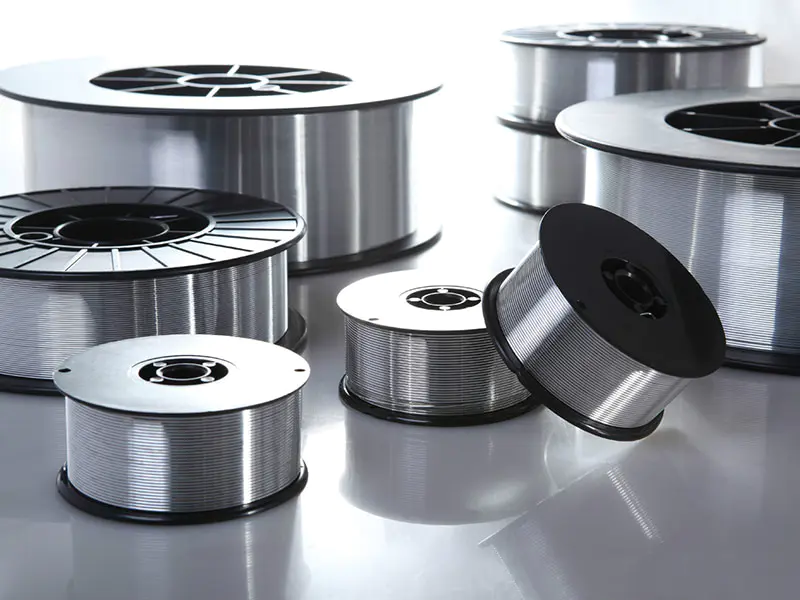Choosing the Right Aluminum Welding Wire: Comparing Different Types and Additives
Understanding Aluminum Welding Wire
What Is Aluminum Welding Wire?
Aluminum welding wire is a consumable material used in welding processes to join aluminum workpieces. It is designed to melt and fuse with the base metal, creating a strong bond. The choice of welding wire depends on factors like the base material, welding process, and desired properties of the weld.
Common Types of Aluminum Welding Wire
- ER4043: Contains 4.5–6% silicon, offering improved fluidity and a brighter weld appearance. Suitable for general-purpose welding of 6XXX series alloys.
- ER5356: Contains 4.5–6% magnesium, providing higher strength and better corrosion resistance. Ideal for welding 5XXX series alloys and marine applications.
- ER4047: Contains 11–13% silicon, resulting in lower melting point and reduced shrinkage. Used for applications requiring minimal distortion.
Key Additives in Aluminum Welding Wire
Silicon Additives (ER4043)
Silicon is a common additive in aluminum welding wire, particularly in ER4043. It enhances the fluidity of the weld pool, making it easier to achieve a smooth and consistent weld. Silicon also helps in reducing the risk of cracking and improves the overall appearance of the weld.
Magnesium Additives (ER5356)
Magnesium is added to aluminum welding wire, such as ER5356, to increase the strength and corrosion resistance of the weld. This makes it suitable for applications exposed to harsh environments, like marine and automotive industries.
Comparing ER4043 and ER5356 Welding Wires
Weld Puddle Fluidity
ER4043 offers higher fluidity, allowing for smoother welds with less spatter. This makes it easier to control the weld pool and achieve a clean finish.
Strength and Durability
ER5356 provides higher tensile strength, making it more suitable for structural applications where strength is critical.
Corrosion Resistance
Both ER4043 and ER5356 offer excellent corrosion resistance. However, ER5356, with its magnesium content, provides superior resistance to saltwater corrosion, making it ideal for marine applications.
Choosing the Right Welding Wire for Your Project
Factors to Consider
- Base Material: Match the wire to the alloy you are welding.
- Welding Process: Ensure compatibility with TIG or MIG welding processes.
- Desired Properties: Consider factors like strength, corrosion resistance, and appearance.
Application-Specific Recommendations
- Marine Applications: Use ER5356 for superior corrosion resistance.
- General-Purpose Welding: ER4043 is suitable for a wide range of applications.
- High-Strength Requirements: ER5356 offers higher tensile strength for structural applications.
FAQ
What is the best aluminum welding wire for 6061 alloy?
For welding 6061 aluminum alloy, ER4043 is commonly recommended due to its good fluidity and appearance. However, for applications requiring higher strength, ER5356 may be more suitable.
Can I use ER4043 for marine applications?
While ER4043 can be used for marine applications, ER5356 is preferred due to its superior corrosion resistance in saltwater environments.
What are the advantages of using ER5356 over ER4043?
ER5356 offers higher tensile strength and better corrosion resistance, making it ideal for structural and marine applications.
How do additives affect the performance of aluminum welding wire?
Additives like silicon and magnesium enhance specific properties of the weld, such as fluidity, strength, and corrosion resistance, allowing for better performance in various applications.
Is TIG welding suitable for aluminum materials?
Yes, TIG welding is well-suited for aluminum materials, providing precise control and high-quality welds. It is commonly used for thin-walled aluminum applications.
NEXT:ER4043 Silicon Aluminum Welding Wire Comprehensive Guide and Applications
Related Products
-
 View More
View More
5154 Aluminum Alloy Welding Wire
-
 View More
View More
ER4043 Silicon Aluminum Welding Wire
-
 View More
View More
ER4047 Aluminum Mig Welding Wire
-
 View More
View More
ER5154 Al-Mg Alloy Wire
-
 View More
View More
ER5087 Magnesium Aluminum Welding Wire
-
 View More
View More
Aluminum Welding Wire ER5183
-
 View More
View More
ER5356 Aluminum Welding Wire
-
 View More
View More
ER5554 Aluminum Welding Wire
-
 View More
View More
ER5556 Aluminum Welding Wire
-
 View More
View More
ER1100 Aluminum Welding Wire
-
 View More
View More
ER5754 Aluminum Welding Wire
-
 View More
View More
ER2319 Aluminum Welding Wire
 English
English Deutsch
Deutsch
 English
English Deutsch
Deutsch


